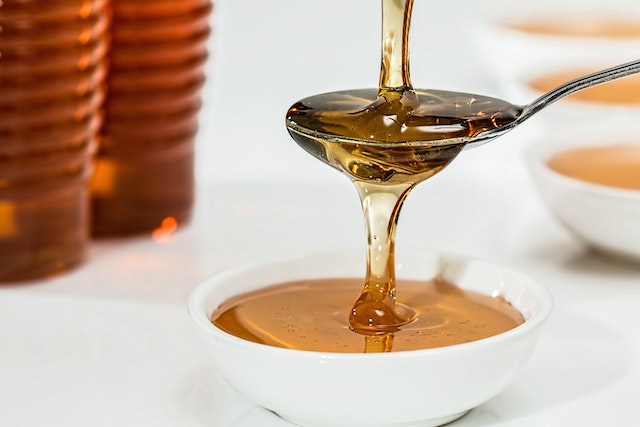How To Clean Honey?
The use of honey as a sweetener in various culinary creations as well as in beverages has been enjoyed for hundreds of years. You may wonder how you can clean honey effectively if you have ever had a sticky spill or if your honey has crystallized as a result of being stored in a sealed jar. If you use the right techniques when cleaning honey, however, you can easily handle what might appear to be a sticky situation. Our guide will explore step-by-step methods for cleaning honey spills, removing crystallized honey, and ensuring that your honey jars stay clean and ready to be used by describing how to clean them properly. I am here to inform you that no matter what kind of honey mishap you are experiencing or if you are trying to revive crystallized honey, this guide will provide you with all the tips and tricks you need to make sure that your honey experience is enjoyable and healthy. Now that we know how to clean honey effectively, let’s dive in and learn how to make your sweet moments even sweeter by cleaning honey effectively.
As an alternative to sugar, honey is a useful ingredient. In addition to being recommended for sweetening coffee and tea, it can also be used as a preventative measure against colds when you can’t stand something sweet, as well as a sweetener for direct consumption in small amounts. There are many health benefits that can be derived from eating this fruit, but if it falls on the carpet, it only gets worse.
It is very hard to wash your hands after using the soft flooring due to the sticky texture and the fact that it is so difficult to get all of the debris off of it. Taking advantage of the suggested reliable methods is not going to be easy for you, but do not waste any more time before you try them out. As a result of acting correctly and quickly, many people have escaped from these types of stains. Could you please tell me why you are not able to do it?
There are countless recipes that can be improved with honey, which is an ingredient that adds a touch of sweetness to them. Honey, famous for its versatility as a natural sweetener, is a pantry staple that is used as a natural sweetener for everything from pancakes to waffles to baked goods. When dealing with honey, you may sometimes encounter sticky situations, quite literally one could say. If you happen to find your favorite honey jar crystallized, or you accidently spilled a jar of honey on your kitchen counter, knowing how to clean honey properly is of utmost importance.
Because honey is sticky, it can be difficult to clean honey spills due to its sticky nature, but fear not. If you follow some basic tips and apply the right approach, you can easily solve honey messes in your kitchen and ensure that it is clean and hygienic at all times. In addition, you can also use a few methods to restore the smooth state and liquid nature of your honey jar if it has crystallized over time.
It is in this comprehensive guide that we will provide you with a step-by-step explanation of how to effectively clean honey spills as well as how to revive crystallized honey after it has been sealed up. Throughout this session, we are going to explore a range of different cleaning techniques and share valuable tips that make the process quicker and easier. The process of cleaning honey will save you a lot of time, avoid sticky messes, and ensure that the honey remains fresh and delicious for as long as possible, no matter if you are an experienced cook or just starting your culinary adventure.
It’s time to face the challenge of cleaning honey and discover practical solutions that will keep you enjoying the intense sweetness of honey without having to go through all the hassle of cleaning. Let’s delve into the world of honey cleaning and discover the practical solutions that will keep your honey experiences as sweet as they can get.
Step by Step Guide – How To Clean Honey
The fact that honey can be so sticky makes cleaning it seem like an impossible task, but when you follow a few simple steps, you can successfully clean up honey spills, maintain a clean and hygienic environment, and eliminate any potential health hazards. How to clean honey is explained in detail here in a step-by-step guide:
-
Act quickly:If you find that honey has spilled, you must act quickly. You will be able to remove the sticky residue from the device much easier if you start the cleaning process as soon as possible. As a result, you should take immediate action whenever you notice a honey spill on your hands.
-
Scrape off excess honey: To remove any excess honey that may have formed on the surface, use your spoon or a blunt knife to gently scrape it off. The honey should not be spread further by touching it with your fingers.
-
Blot the area:Using a clean cloth or paper towel, gently blot the affected area with the cloth or paper towel in an attempt to absorb the honey as much as possible. It is advisable to avoid rubbing or scrubbing the honey on the surface or on the material, as this may force it deeper into the material.
-
Prepare a cleaning solution: Put a small bucket or spray bottle on a stove and add warm water and a couple drops of mild dish soap. To get the right ratio, one part dish soap should be mixed with four parts water, approximately. A soapy solution can be created by stirring or shaking the solution well.
-
Apply the cleaning solution:Using a damp cloth or sponge, gently dab a little of the soapy water solution on the honey residue that remains, and then wipe it off. As soon as the solution is applied to the area, let it sit for a few minutes so that the stickiness can be released.
-
Gently scrub:Severe rashes can be removed by gently scrubbing the affected area with a soft bristled brush or by using a cloth that has soft fibers. Don’t apply too much pressure to the surface or fabric, as this may damage delicate components or surfaces.
-
Rinse with clean water: You should remove any soap residue from the area by rinsing it with clean water after you have scrubbed it. The best way to perform this step is to use a clean cloth or sponge that has been dampened with water.
-
Dry thoroughly:Use a soft cloth or paper towel to wipe the cleaned area dry and remove any excess moisture. The product should be allowed to air dry completely before it can be used or stored.
-
Clean surrounding surfaces:A spill of honey often spreads to areas surrounding it that are not immediately affected. As soon as the honey has landed on any nearby surfaces, such as countertops, floors, or furniture, you should take the time to clean them.
-
Repeat if necessary:It may be necessary to repeat the cleaning process in order to ensure a complete removal of stubborn or larger honey spills. In order to achieve the desired results, you need to remain patient, persistent, and take your time to clean.
This guide will give you step-by-step instructions on how to properly clean honey spills and restore your surroundings to a state of cleanness by following these simple steps. When it comes to cleaning, it is important to act as fast as possible, to use gentle cleaning methods, and to be thorough. The sweetness of honey can be enjoyed without the worries of sticky messes if you take a little care when enjoying it.
Professional cleaning of honey stains
It can be said that there is no more reliable method than to make use of the expertise of a carpet cleaning company that will provide you with an experienced staff. If you pay a reasonable amount, you’ll save your time (which is probably worth more in the long run anyway) and avoid getting into risky situations that may lead to further loss of time. The team has been through every challenge that has come their way. It is important to know the steps of the most suitable technique for the tissue in question. Taking the necessary action is only a matter of looking and bringing the necessary equipment in order to do so.
You can be sure that they will be able to get rid of pretty much any dirt or stain that you may have. Even though you will spend more than you would by doing it yourself, it is well worth it – you will save time, effort, have a greater chance of success and reduce the risk of ruining your gorgeous accessory in the process. The need for a new purchase can be avoided by allocating some funds to avoid the need for a new purchase from the start.
Q1: How do I clean honey spills from clothing?
A: In order to clean honey spills from clothing, you may want to use a spoon or blunt knife in order to scrape off any excess honey that has accumulated. As much as possible, rinse the affected area with cold water to get rid of any sticky residue that has accumulated on it. The stain should be removed with a stain remover or a mixture of dish soap and water as a pre-treatment of this area. The fabric should be gently rubbed together to ensure that the cleaning solution is absorbed into the fabric. Follow the care instructions on the garment so that you can launder the clothing as usual.
Q2: Can I use hot water to clean honey spills?
A: In general, cold or lukewarm water is recommended for cleaning honey spills when they are a bit sticky. When the honey is left in contact with hot water, it will spread and penetrate the fabric or surface even further, making the process of removing it more difficult. By using cold water, you will be able to better remove the honey because it will be able to solidify and make it easier to remove.
Q3: How do I clean honey spills from carpets or upholstery?
A: You should use a spoon or blunt knife in order to scrape off any excess honey from carpets or upholstery that have been spilled with honey. To absorb as much honey as possible, take a clean cloth or a piece of paper towel and wipe the area. With a clean cloth or sponge, apply a solution of mild dishwashing soap and warm water on the stained area and allow the product to sit for a few minutes. Once the stain has been lifted, it should be blotted again. Blot the area with a clean piece of paper after rinsing it with clean water. If the stain persists, you may want to use a carpet or upholstery cleaner which is specialized to remove stains like those. Follow the instructions provided by the manufacturer.
Q4: Can I use vinegar to clean honey spills?
A: Despite the fact that vinegar is effective at removing some stains, it should not be used to remove honey spills since vinegar is acidic. In addition to being acidic, vinegar can produce discoloration or damage to certain surfaces and fabrics due to its reaction with the sugars in honey. Usually, honey spills can be cleaned with mild dish soap and water or with specialized cleaning solutions like vinegar and water.
Q5: How do I clean honey jars or containers?
A: To clean honey jars or containers, you should start by emptying the honey from any remaining jars or containers. In order to remove any residue left on the jar, rinse it with warm water. The inner and outer surfaces of the jar should be cleaned with a sponge or cloth soaked in soapy water. The jar should then be rinsed thoroughly and allowed to air dry completely before it can be reused or stored.
Q6: How can I prevent honey spills?
A: When storing honey jars and containers, take care to handle them carefully, seal them tightly once they are no longer in use, and store them in a cool, dry place when not in use. If you want to avoid accidental spills of honey, be sure not to place honey jars close to the edges of tables or countertops. Furthermore, using squeeze bottles or honey dispensers with controlled pouring mechanisms can help reduce spills and provide better control over how much honey is being poured out.
Q7: Is honey hard to clean?
A: Whenever you spill honey on the counter or floor, you can simply wipe it away with a wet washcloth dipped in hot water and you will be able to clean the mess up. The water should be heated to the highest possible temperature. You will be left with a clean counter after this, since you will be able to melt the honey right off of it.
Q8: How can I check pure honey?
A: Then add some water to it and swirl it in a clockwise motion. If the honeycomb texture forms on the surface, it is pure honey. The honey sticks to the thumb if you place a drop onto it and press it down with your thumb. There is no way to tell if it is pure if it doesn’t stick and drips away.
Q9: How to check the purity of honey?
A: It is possible to test the purity of honey by pouring some drops over a cloth or blotting paper and letting the honey flow through it without wetting it. If the honey passes through the paper without wetting it, then it is considered to be pure honey, while if the honey absorbs or wets it, then it is considered to be impure honey.
Q10: Does honey get cleaned?
A: Any bees present in the flow frame at the time of the disturbance will not be harmed, and the bees in the flow frame will not show any signs of disturbance. In most cases, it is not necessary to filter honey and it can be produced in a clean condition. After these procedures are completed, the bees are reset by removing the capping from the cells, cleaning out any honey that remains, and refilling them, beginning the process all over again.
Q11: Is unfiltered honey safe?
A: Both raw and regular honey is safe for consumption by people, but it is a good idea to avoid honey that contains added sugars in order to keep our health at its best. A strain of bacteria known as Clostridium botulinum can be found in both raw honey and regular honey in tiny amounts. As a result of these bacteria, botulism can occur, which is a rare form of food poisoning caused by this bacteria.
Q12: How long does pure honey last?
A: Honey should be stored for as long as possible for the best quality. It will still remain safe after that period of time, but it may not have the same quality as before. Honey may cloud up, crystallize or solidify at certain times during storage, but this does not pose any danger to human health. A microwave or a pan of hot water can be used in order to clarify or melt the honey.
Q13: Why we don’t boil honey?
A: According to the scientific community, the cooking or heating of honey damages many of its beneficial properties in such a way that many of them are impeded. Based on research conducted by the National Center for Biotechnology, it has been confirmed that heating honey has adverse effects on the honey. If honey is cooked, it will lose a number of nutrients as well as enzymes, which can negatively affect the quality of the honey.
Q14: Why should you not boil honey?
A: If it is cooked, it loses a great deal of its nutrients and enzymes, so its quality is diminished. A large amount of heated honey can actually result in the body experiencing delirious effects as well as causing death if eaten in excess. A negative chemical change occurs in honey when it is cooked up to 40 degrees Celsius, which causes it to taste bitter when exposed to it.
Q15: Does pure honey dissolve in water?
A: Honey that is natural will not dissolve in water, or if it does, it will dissolve very slowly, since honey contains little water in the first place. Among the reasons why bees dislike water is because it encourages fungi growth, which in turn is detrimental to their survival. Therefore, to incorporate natural honey into the liquid, it needs to be stirred for a longer period of time before it can be incorporated.
Q16: Which is 100% pure honey?
A: As the name suggests, “pure honey” refers to honey without any other additives other than honey (such as corn syrup, which sometimes gets added to industrial honey in order to reduce costs).
Q17: What is the best time to eat honey?
A: When it comes to boosting energy levels and staying charged up throughout the day, honey is the best choice to consume in the morning. There are plenty of health benefits associated with having honey in the morning, including: Helps you lose those extra kilos that you are carrying around. It improves the digestive system of the body.
Q18: Who should not eat honey?
A: It is not recommended that babies under the age of one year consume honey, even a tiny taste of it. It is possible to get infant botulism from exposure to Clostridium botulinum spores in honey, which is a rare but serious condition affecting the gastro-intestinal tract. A baby’s intestines can become infected with bacteria from the spores, causing them to produce a toxin that can cause severe illness.
Q19: Can I eat pure honey everyday?
A: The consumption of honey on a daily basis has been shown to have positive effects on the body’s antioxidant compound level, which is an effective way to combat excess cholesterol. In research studies, it has been found that honey contains antioxidants that can prevent the narrowing of arteries as a result of aging.
Q20: Does honey release poison when heated?
A: What are the possible effects of heat on honey in terms of toxicity? Anyone who uses raw honey has a lot of concerns and confusion when it comes to heating up the honey because it can cause a lot of problems. The chemical composition of honey will change when it is heated, but this will not cause any harm to the consumer, as it is not toxic enough for it to cause harm.
Conclusion
There are several simple steps that can be followed to clean honey spills. However, it may seem difficult at first, but with the correct approach and a few simple steps, the task is quite manageable. As a first step, it is important to act quickly, scrape off any excess honey, clean the area by blotting, and prepare a solution of soapy water to cleanse the area. You will be able to remove the sticky residue by gently scrubbing the affected area and rinsing it with clean water after you have scrubbed it. If you want to prevent any lingering moisture in the cleaned area, you must thoroughly dry it after cleaning it. In addition, it is important to wipe down the surfaces around the honey that may have come into contact with it in order to ensure that the surrounding area remains hygienic.
It is very important to follow this step-by-step guide if you are looking to perform a thorough job of cleaning honey spills and maintain a clean and pleasant environment. If there is a stubborn or larger spill, it is especially important to be patient and persistent, and to repeat the process of cleaning if necessary. Honey can be enjoyed without worrying about sticky messes if you use the right cleaning techniques, so that you can enjoy the sweet taste of honey.
It is therefore important not to panic as soon as you come across a honey spill. Following these simple steps will allow you to be able to easily clean up any mess that you might have created. You can enjoy the delightful taste of honey surrounded by a clean and clutter-free environment while keeping your surroundings clean.







